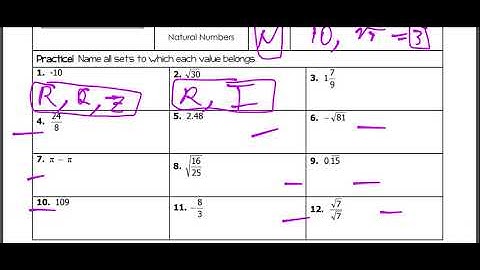We will learn how to solve addition of mixed fractions or addition of mixed numbers. There are two methods to add the mixed fractions. For example, add 2\(\frac{3}{5}\) and 1\(\frac{3}{10}\). We can use the two methods to add the mixed numbers. Method 1:
Method 2:
Now let us consider some of the examples on addition of mixed numbers using Method 1. 1. Add 1\(\frac{1}{6}\) , 2\(\frac{1}{8}\) and 3\(\frac{1}{4}\) Solution: 1\(\frac{1}{6}\) + 2\(\frac{1}{8}\) + 3\(\frac{1}{4}\) Let us add whole numbers and fraction parts separately. = (1 + 2 + 3) + (\(\frac{1}{6}\) + \(\frac{1}{8}\) + \(\frac{1}{4}\)) = 6 + (\(\frac{1}{6}\) + \(\frac{1}{8}\) + \(\frac{1}{4}\)) = 6 + \(\frac{1 × 4}{6 × 4}\) + \(\frac{1 × 3}{8 × 3}\) + \(\frac{1 × 6}{4 × 6}\); [Since, the L.C.M. of 6, 8 and 4 = 24] = 6 + \(\frac{4}{24}\) + \(\frac{3}{24}\) + \(\frac{6}{24}\) = 6 + \(\frac{4 + 3 + 6}{24}\) = 6 + \(\frac{13}{24}\) = 6\(\frac{13}{24}\) 2. Add 5\(\frac{1}{9}\), 2\(\frac{1}{12}\) and \(\frac{3}{4}\). Solution: 5\(\frac{1}{9}\) + 2\(\frac{1}{12}\) + \(\frac{3}{4}\) Let us add whole numbers and fraction parts separately. = (5 + 2 + 0) + (\(\frac{1}{9}\) + \(\frac{1}{12}\) + \(\frac{3}{4}\)) = 7 + \(\frac{1}{9}\) + \(\frac{1}{12}\) + \(\frac{3}{4}\) = 7 + \(\frac{1 × 4}{9 × 4}\) + \(\frac{1 × 3}{12 × 3}\) + \(\frac{3 × 9}{4 × 9}\), [Since the L.C.M. of 9, 12 and 4 = 36] = 7 + \(\frac{4}{36}\) + \(\frac{3}{36}\) + \(\frac{27}{36}\) = 7 + \(\frac{4 + 3 + 27}{36}\) = 7 + \(\frac{34}{36}\) = 7 + \(\frac{17}{18}\), = 7\(\frac{17}{18}\). 3. Add \(\frac{5}{6}\), 2\(\frac{1}{2}\) and 3\(\frac{1}{4}\) Solution: \(\frac{5}{6}\) + 2\(\frac{1}{2}\) + 3\(\frac{1}{4}\) Let us add whole numbers and fraction parts separately. = (0 + 2 + 3) + \(\frac{5}{6}\) + \(\frac{1}{2}\) + \(\frac{1}{4}\) = 5 + \(\frac{5}{6}\) + \(\frac{1}{2}\) + \(\frac{1}{4}\) = 5 + \(\frac{5 × 2}{6 × 2}\) + \(\frac{1 × 6}{2 × 6}\) + \(\frac{1 × 3}{4 × 3}\), [Since, the L.C.M. of 6, 2 and 4 = 12] = 5 + \(\frac{10}{12}\) + \(\frac{6}{12}\) + \(\frac{3}{12}\) = 5 + \(\frac{10 + 6 + 3}{12}\) = 5 + \(\frac{19}{12}\); [Here, fraction \(\frac{19}{12}\) can write as mixed number.] = 5 + 1\(\frac{7}{12}\) = 5 + 1 + \(\frac{7}{12}\) = 6\(\frac{7}{12}\) 4. Add 3\(\frac{5}{8}\) and 2\(\frac{2}{3}\). Solution: Let us add whole numbers and fraction parts separately. 3\(\frac{5}{8}\) + 2\(\frac{2}{3}\) = (3 + 2) + (\(\frac{5}{8}\) + \(\frac{2}{3}\)) = 5 + (\(\frac{5}{8}\) + \(\frac{2}{3}\)) L.C.M. of denominator 8 and 3 = 24. = 5 + \(\frac{5 × 3}{8 × 3}\) + \(\frac{2 × 8}{3 × 8}\), (Since, L.C.M. of 8 and 3 = 24) = 5 + \(\frac{15}{24}\) + \(\frac{16}{24}\) = 5 + \(\frac{15 + 16}{24}\) = 5 + \(\frac{31}{24}\) = 5 + 1\(\frac{7}{24}\). = 6\(\frac{7}{24}\). Now let us consider some of the examples on addition of mixed numbers using Method 2. 1. Add 2\(\frac{3}{9}\), 1\(\frac{1}{6}\) and 2\(\frac{2}{3}\) Solution: 2\(\frac{3}{9}\) + 1\(\frac{1}{6}\) + 2\(\frac{2}{3}\) = \(\frac{(9 × 2) + 3}{9}\) + \(\frac{(6 × 1) + 1}{6}\) + \(\frac{(3 × 2) + 2}{3}\) = \(\frac{21}{9}\) + \(\frac{7}{6}\) + \(\frac{8}{3}\), (L.C.M. of 9, 6 and 3 = 18) = \(\frac{21 × 2}{9 × 2}\) + \(\frac{7 × 3}{6 × 3}\) + \(\frac{8 × 6}{3 × 6}\) = \(\frac{42}{18}\) + \(\frac{21}{18}\) + \(\frac{48}{18}\) = \(\frac{42 + 21 + 48}{18}\) = \(\frac{111}{18}\) = \(\frac{37}{6}\) = 6\(\frac{1}{6}\) 2. Add2\(\frac{1}{2}\), 3\(\frac{1}{3}\) and 4\(\frac{1}{4}\). Solution: 2\(\frac{1}{2}\) + 3\(\frac{1}{3}\) + 4\(\frac{1}{4}\) = \(\frac{(2 × 2) + 1}{2}\) + \(\frac{(3 × 3) + 1}{3}\) + \(\frac{(4 × 4) + 1}{3}\) = \(\frac{5}{2}\) + \(\frac{10}{3}\) + \(\frac{17}{4}\), (L.C.M. of 2, 3 and 4 = 12) = \(\frac{5 × 6}{2 × 6}\) + \(\frac{10 × 4}{3 × 4}\) + \(\frac{17 × 3}{4 × 3}\), (Since, L.C.M. of 2, 3 and 4 = 12) = \(\frac{30}{12}\) + \(\frac{40}{12}\) + \(\frac{51}{12}\) = \(\frac{30 + 40 + 51}{12}\) = \(\frac{121}{12}\) = 10\(\frac{1}{12}\) 3. Add 3\(\frac{5}{8}\) and 2\(\frac{2}{3}\). Solution: 3\(\frac{5}{8}\) + 2\(\frac{2}{3}\) Let us convert the mixed fractions into improper fractions. = \(\frac{(8 × 3) + 5}{8}\) + \(\frac{(3 × 2) + 2}{3}\) = \(\frac{29}{8}\) + \(\frac{8}{3}\), L.C.M. of denominator 8 and 3 = 24. = \(\frac{29 × 3}{8 × 3}\) + \(\frac{8 × 8}{3 × 8}\), (Since, L.C.M. of 8 and 3 = 24) = \(\frac{87}{24}\) + \(\frac{64}{24}\) = \(\frac{87 + 64}{24}\) = \(\frac{151}{24}\) = 6\(\frac{7}{24}\).  Word Problem on Addition of Mixed Fraction: The doctor advises every child to drink 3\(\frac{1}{2}\) litres of water in morning, 4\(\frac{1}{4}\) litres in the after noon and \(\frac{1}{2}\) litre before going to bed. How much water should a child drink every day? Solution: 3\(\frac{1}{2}\) + 4\(\frac{1}{4}\) + \(\frac{1}{2}\) Let us add whole numbers and fraction parts separately. = (3 + 4 + 0) + (\(\frac{1}{2}\) + \(\frac{1}{4}\) + \(\frac{1}{2}\)) = 7 + (\(\frac{1}{2}\) + \(\frac{1}{4}\) + \(\frac{1}{2}\)) L.C.M. of denominators 2, 4 and 2 = 4. = 7 + \(\frac{1 × 2}{2 × 2}\) + \(\frac{1 × 1}{4 × 1}\) + \(\frac{1 × 2}{2 × 2}\), [Since, the L.C.M. of 2, 4 and 2 = 4.] = 7 + \(\frac{2}{4}\) + \(\frac{1}{4}\) + \(\frac{2}{4}\) = 7 + \(\frac{2 + 1 + 2}{4}\) = 7 + \(\frac{5}{4}\) [Here, the fraction \(\frac{5}{4}\) can write as mixed number.] = 7 + 1\(\frac{1}{4}\) = 8\(\frac{1}{4}\) Therefore, 8\(\frac{1}{4}\) litres of water should a child drink every day. ● Related Concepts
Didn't find what you were looking for? Or want to know more information about Math Only Math. Use this Google Search to find what you need. What is the rule for adding fractions with unlike denominators?The basic rule for adding fractions with unlike denominators is to find the LCM of the different denominators and convert the given unlike fractions into like fractions. This can be done by changing their denominators equal to the LCM. Once the denominators become the same, the numerators can be added.
|

Advertising
LATEST NEWS
Advertising
Populer
Advertising
About

Copyright © 2024 nguoilontuoi Inc.












